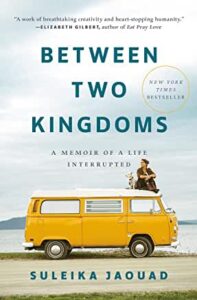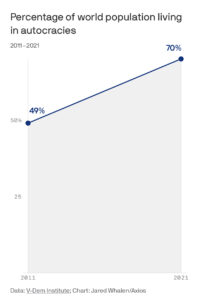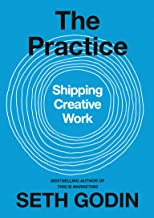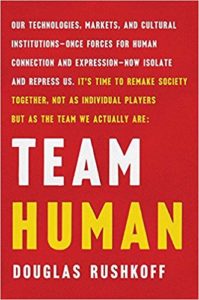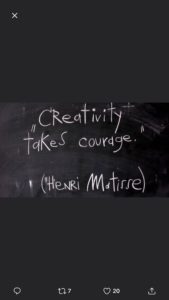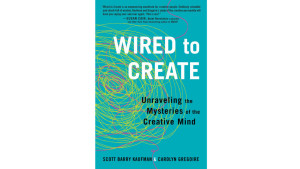Creativity
Thursday, March 31, 2022
March 31, 2022’60-65% of all the cells in the heart are neural cells, which function in the same way as brain cells.’
A global shift is under way and more people are sensing it involves a deeper connection with their heart. This desire for more heart connection is a growing movement, one that people are drawn to by a nudge from their own intuition or conscience to listen to their heart more and to connect with their inner guidance. -Heart Math
100 Days of Creativity with Suleika Jaouad begins tomorrow, April 1st
‘Here, as I’m undergoing my second bout of cancer treatment for leukemia, I’ve decided to do a 100-day creativity project beginning on April 1, 2022, and I’m inviting all you beautiful souls to join me.
This is my fourth go-round. To me, the 100-day project is so powerful, both the sense of creative possibility and the organizing principle it affords: your day becomes centered around one small creative act. I also love the element of community, drawing inspiration and a sense of accountability from others.
There are so many shapes such a project can take—from writing a daily childhood memory to collaging, piano playing, or walking in nature. It just needs to feel exciting, a little challenging, but most of all sustainable, so you’re able to keep it up over the course of 100 days.
As someone who feels pulled by the siren call of hyper-productivity, I want to make clear: the 100-day project is not that. The point is to get into a more liberated, playful creative flow state—not to reinforce the pressure of constant striving, or the compulsion to be productive, or the idea that creative activity needs to culminate in some kind of grand masterpiece.
This time around, the 100-day project will be mostly self-directed. For those who want an extra dose of accountability, paid subscribers will have the option of getting regular pep talks from me, along with check-ins and opportunities to have your work featured.
Below you’ll find some frequently asked questions and my answers—all with the caveat that this practice is for you. Make it your own. Let it take you where it will.
In love and creative solidarity,
Suleika’
Her book, Lost Between Two Kingdoms, is now available in paperback. Wonderful read and journey. -dayle
AXIOS
Democracy is good for your health
Here’s a big reason to study the people of Ukraine: The war is showing in real-time the power of democracy, amid growing global clout for dictators.
Why it matters: Free people live better lives, a mountain of data shows. And sometimes it takes an aspiring democracy to remind us why governments of the people are worth fighting for.
Let the graphic above sink in — then share it with people who trivialize democratic erosion. Democracies are literally disappearing.
Of 195 nations on earth, just 34 are liberal democracies — where citizens have rights to free speech, free press, free and fair elections, and other liberties — according to a study by Varieties of Democracy.
Living in a stable democracy leads to a longer and more fulfilling life, the data shows:
Health: If you live in a democracy that’s at least 25 years old, you’re likely to live 14 years longer than people in autocracies, a University of British Columbia study found. Babies in mature democracies are 78% less likely to die in childbirth.
Wealth: Democratization boosts a nation’s wealth 20% over 25 years.
Education: Democratization bumps citizens’ enrollment in secondary education by 70%.
Reality check: After nuclear war, and possibly climate changes, the rise of authoritarians, like Vladimir Putin, and the decline of democracies has the most potential to shape America’s future — more profoundly than the small-ball fights we often get sucked into.
The dictators are winning. A Russian dictator, backed by an authoritarian Chinese leader and enabled by the silence of the Saudis, is killing thousands, seizing land, destroying a nation.
A Freedom House report released in February found that 60 countries had suffered declines in democracy in the previous year.
The bottom line: American critics sometimes dog — and in some cases damage — their democracy. But watching Ukrainians amplifies the preciousness and precariousness of freedom.
[Editor’s note: This article has been corrected to note that people living in democracies older than 25 years are likely to live longer.]
Glory to Ukraine ~ Their struggle, their sacrifice, is ours. -dayle
Julian of Norwich
‘She encourages us to stand up to the forces that destroy, forces she calls “the spirit of evil.”
The warrior in us can rise up, armed with trust and courage, to spread low and make justice and compassion happen. In doing this, a promise is set forth that, some day, all can be well.
“All shall be well, and all shall be well and all manner of thing shall be well.” ❁
-Julian of Norwich
‘The biggest influence on Julian as an adult were Thomas Aquinas and Meister Eckhart, whether directly or indirectly. Remember that Aquinas, who was condemned by bishops in both Oxford and Paris less than a century before Julian was born, was condemned for his non-dualism (which, again, makes him a photo-feminist). But, and this cannot be emphasized enough, he was canonized a saint in 1323, less than twenty years before she was born. The excitement among the Dominicans in England must have been extreme.
As Aquinas put it, one person can do more evil than all the other species put together.’ -Matthew Fox
Yep. Still. The 21st century is no different. -dayle
Power Path
New Moon in Aries is Friday April 1 at 12:24 AM, just after midnight March 31. In some time zones the New Moon is on March 31.
‘This is an extremely potent New Moon, full of fire, opportunity, and inspiration for starting something new. It marks the beginning of a new cycle and should be honored as the set up and foundation for new commitments, goals, confidence, clarity, change and attitude. We are called to action, to be better, to be more conscious and aligned with spirit. It’s a great time to revisit goals and intentions and either reset and confirm them as they are, or refine and improve them if they feel too limited.
A re-evaluation of your relationships especially your relationship to yourself and to spirit is also supported at this time. Are you doing the work? Are you committed to having a good life? Are you taking responsibility for it? Are you ready to embrace the power that awaits you and change all aspects of your story that point to disempowerment or being wronged in some way? This is a very good time to step into power and to do so takes being proactive and not reactive.
You cannot be ambivalent or in blame of others if you wish to be proactive and take advantage of what this time has to offer. Step into the grand adventure of life and receive the gifts of spirit that are available to those that do. Happy Spring. Happy planting of seeds, dreams and wishes.’ ☆
For the Bees
Steady-Newsletter
by Dan Rather, author and journalist
What I find so inspiring about this article and the larger No Mow May movement is its recognition that we humans are foolhardy to try to control nature — that in our homogenization of our landscapes, our search for tidiness and uniformity, we not only miss out on the beautiful wildness of Earth’s diversity, but we also do real damage to its function.
At Steady, we are always on the lookout for different kinds of news stories that inspire, provoke thought, and, yes, induce some hope and steadiness.
We came across just such an article recently in The New York Times. It was written by Anne Readel, who is described as “a photographer, writer, biologist and lawyer.” It’s quite the list of credentials and a reminder that many of us wear multiple professional and personal hats.
During an era of momentous events, this story could be considered “small” or “quaint,” but that scale of size is part of what makes it so powerful. I would argue that in a world that often seems out of balance, we can build progress from small individual actions that are transformative in their collective impact.
The article is titled, “In Wisconsin: Stowing Mowers, Pleasing Bees,” and it asks in its subtitle a question that pretty much explains its central idea: “Can the No Mow May movement help transform the traditional American lawn — a manicured carpet of grass — into something more ecologically beneficial?
‘Appleton became the first city in the United States to adopt No Mow May, with 435 homes registering to take part. For the last few years, Appleton has spearheaded the movement to save the bee by asking community members to leave their lawns alone during May.’
Lastly, on this final day of March 2022, sharing writer Alexandra Stoddard’s words of contemplation for our ‘next’ as democracies weaken, devastating wars continue, the ubiquitous plague waves in and out, and global corruption, i.e., greed, power, and patriarchy, corrodes even the simplest of lives.
When do you feel you are most in touch with your spirit, the core of your being? Where are you? What are you doing? Who are you with? Who would you want to be with? How does this make you feel?
Marianne Williamson:
“We were all indoctrinated into a disenchanted world, and we’ve sacrificed a lot in order to live here. The world isn’t better off for having forfeited its tenderness. The meanness and cynicism of our age, the reflexive sarcasm that passes for intelligent reflection, the suspicion and judgment of everyone and everything – such are toxic by-products of a disenchanted worldview.
Many of us went off that wheel of suffering. We don’t want to accept that what is is what has to be. We want to pierce the veil of illusion that separates us from a world of infinite possibility. We want another kind of life for ourselves and for the world. We are considering that there might be another way – a door to miraculous realms simply waiting to be opened. Today I consider that there might be another way.”
“What you don’t surrender, the world strips away.” -Bruce
Tina.
March 28, 2021“If you are unhappy with anything…whatever is bringing you down, get rid of it. Because you’ll find that when you’re free, your true creativity, your true self, comes out.”
#HBO
“You are in the time of the interim
Where everything seems withheld.
The path you took to get here has washed out.
The way forward is still concealed from you.
The old is not old enough to have died away.
The new is still too young to be born.”
-John O’Donohue
~
“To know anything fully is always to hold that part of it which is still mysterious and unknowable.” -Fr Richard Rohr
~
What has happened to our ability to dwell in unknowing, to live inside a question and coexist with the tensions of uncertainty? Where is our willingness to incubate pain and let it birth something new? What has happened to patient unfolding, to endurance?
These things are what form the ground of waiting. And if you look carefully, you’ll see that they’re also the seedbed of creativity and growth—what allows us to do the daring and to break through to newness. . . .
Creativity flourishes not in certainty but in questions. Growth germinates not in tent dwelling but in upheaval. Yet the seduction is always security rather than venturing, instant knowing rather than deliberate waiting.
-Sue Monk Kidd
When the Heart Waits: Spiritual Direction for Life’s Sacred Questions
Bruce’s community.
January 15, 2021‘The first half of Bruce Springsteen’s autobiography makes some things abundantly clear:
He had no natural ability to play the guitar. In fact, after his first lessons, he quit, unable to play a note.
He had no singing talent. Every group he was part of needed a lead singer, and it wasn’t him.
And just about everyone dismissed him. Audiences walked out, his first agent simply stopped returning his calls and bandmates gave up and moved on.
He didn’t even know how to drive a car. Not only wasn’t he dating in high school, he wasn’t even cruising around town, being a charismatic rock star.
Talent is overrated. Skill is acquirable.
Showing up is something almost every creative leader has in common. In business, in the arts, in society. Consistently shipping the work, despite the world’s reaction, despite the nascent nature of our skill, despite the doubts.
And community is essential. The people you surround yourself with can reinforce your story, raise the bar and egg you on.
After the fact, the community becomes an integral part of your story of success. But first, you have to commit to the journey.’
-Seth Godin, author
“Writing about yourself is a funny business…but in a project like this, the writer has made one promise, to show the reader his mind.”
-Bruce
Can we agree at least on this?
We need you to ship it.
October 20, 2020From author Seth Godin:
In this whiteboard video, Seth Godin challenges you, whatever it is you do for a living, to figure out how to do work that matters, work you’re proud of.
“This is the book I need right now. It’s an extraordinary and electrifying call to action for writers, artists and creators in every walk of life. I re-read passages and felt as if my own secret creed was being explained back to me, in words I hadn’t yet found.”
—Rosanne Cash, Grammy-winning singer-songwriter
Creative work doesn’t come with a guarantee. But there is a pattern to who succeeds and who doesn’t. And engaging in the consistent practice of its pursuit is the best way forward.
Based on the breakthrough Akimbo workshop pioneered by legendary author Seth Godin, The Practice will help you get unstuck and find the courage to make and share creative work. Godin insists that writer’s block is a myth, that consistency is far more important than authenticity, and that experiencing the imposter syndrome is a sign that you’re a well-adjusted human. Most of all, he shows you what it takes to turn your passion from a private distraction to a productive contribution, the one you’ve been seeking to share all along.
With this book as your guide, you’ll learn to dance with your fear. To take the risks worth taking. And to embrace the empathy required to make work that contributes with authenticity and joy.
Authenticity is mandatory, I think, yet, I understand their message.- dayle
Iconoclast.
October 6, 20201955-2000
“There are really three parts to the creative process. First, there is inspiration, then there is the execution, and finally, there is the release”
-Eddie Van Halen
Team Human
December 17, 2018A future centered on our pre-digital values of connection, creativity and respect.
‘Team Human’
“Find the others; together let’s make the future that we always wanted.”
[Publishes January 22, 2019]
Your energies, your gifts, your vision.
August 11, 2018No one ever died saying, I’m so glad for the self-centered, self-serving, and self-protective life I lived.” Offer yourself to the world–your energies your gifts, your visions, your spirit–with open-hearted generosity.
-Parker Palmer
“Life has set the stamp of individuality on your soul. You are different from any other person who ever lived. You are an individualized center in the Consciousness of God. You are an individualized activity in the Action of God. You are you, and you are eternal. Begin to live today as the immortal being you are and all thought of death, all fear of change will slip from you. You will step out of the tomb of uncertainty into the light of eternal day.”
-Ernest Holmes
We are here to live out loud. -Emile Zola
“Imagine if birds only sang when heard. If musicians only played when approved of. If poets only spoke when understood.”
“Remove your human hesitation. As you inhale, feel what rises in you. At the top of your breath, blink the mind shut like an eye. As you exhale, let the feeling sound from you, no matter how softly.
-Mark Nepo
“…those giving more.”
March 21, 2018“With all the abundance we are receiving, there coms a time when we are called to give it away. It’s like breathing—you can only inhale for along.
Giving creates the space for receiving.
And giving creates within us a sense that we are doing our part. It says we are one with the whole.
We are all here to serve each other.
The happiest people are not those getting more, but those giving more. [H. Jackson Brown Jr.]
Give from the abundance and courage of your heart.”
And be creative.
-Science of Mind
Spiritual check-in.
August 29, 20171. You’re Bored.
I feel like boredom is the first and quietest signal of spiritual despondency. I don’t just mean that you’re bored with your religious path; I mean that you’re bored with everything—bored with yourself, bored with human beings, bored with your work, bored with life. Some people accept boredom as normal, but I see it as a sign that you have completely lost touch with the real wonder that is exploding all around you in every moment. Because let’s be honest—this world is many things, but it ain’t boring. This world is beautiful, violent, extreme, dangerous, magnificent and mysterious. This world is also filled with millions of varied and incredible life forms, including human beings (the most creative, bizarre, unpredictable species that ever lived). If all that bores you, then your soul has really gone to sleep at the wheel. Start reviving your curiosity, and your spirit will have a chance to wake up again.
2. You’re Scared.
You’re scared of everything and everyone. Fear is the opposite of faith, and your fear is a signal that your faith has left you. Fear is also the murderer of creativity, innovation, hope, risk and joy. Fear always makes the most boring, soul-killing choices, because fear only ever speaks one word, and that word is: “STOP!” When you only listen to your voice of fear, all you do is remain paralyzed. And fear breeds fear, so you get more and more frozen by the day. But your soul doesn’t want to stop. Your soul was born on a spinning planet, in an evolving world, in an expanding universe. Your soul is all about motion. Your soul wants to GO—wants to try things, wants to jump, wants to soar, wants to sail, wants to create, wants to fall, wants to fail, wants to try again. Sit down and have a calm discussion with your fear. Respectfully inform your fear that it doesn’t get to make decisions anymore. Let your creativity and your curiosity start making decisions, instead. Watch and see what happens in your life next, as your soul grows into the giant space of possibility that your fear had been blocking forever.
3. You’re Angry
Anger is OK, actually. Anger, we can work with. At least anger (unlike boredom and fear) has fire in it. At least anger is alive with a kind of passion. The ancients said that there are three different kinds of prayer: You can pray in gratitude, you can pray in beseechment or you can pray in anger. You are allowed, in other words, to vent your rage to God. You are allowed to say, “I am furious at you for what you have allowed to occur!” Do it. Get it off your chest. (God can take it.) But make a commitment that you will not remain in that state of rage for your entire life, or else it will burn a hole right through your soul. Start asking the universe more interesting questions than, “Why am I so cursed?” Start asking, “How can I learn to see this perceived curse as a blessing? How can I grow from here? What is life trying to teach me? What does my soul want the rest of its journey to look like? How am I being invited to transform?” By asking these questions, you can turn the fire of your anger into a different kind of fire—a fire for expansion, a fire for greatness, a fire for dignity, a fire for grace. Trust me, your soul will love those questions far more than it loves the hot and simple rage.
Read more: http://www.oprah.com/spirit/elizabeth-gilbert-spiritual-and-emotional-meltdown#ixzz4rBEWemJn
daydreaming to creativity.
January 6, 2016There’s a Wrong Way to Daydream—Here’s How to Do It Right
A study by those Harvard researchers found that mind wandering consumed an average of 47 percent of people’s waking hours. This begs the question: If mind wandering is so costly to our well-being, then why in the world are we so willing to spend nearly half of our lives in this mental state?
Creative thinkers know, despite what their parents and teachers might have told them, that daydreaming is hardly a waste of time. But unfortunately, many students learn to suppress their natural instincts to dream and imagine—instead, they’re taught to fit into a standardized mold and to learn by the book, in a way that may not feel natural and that very well may suppress their innate desire to create. But as two prominent psychologists recently noted, “Not all minds who wander are lost” —in fact, the mind’s wandering is vital to imagination and creative thought.
Nearly 50 years ago, psychologist Jerome L. Singer established that daydreaming is a normal and indeed widespread aspect of human experience. He found that many people are “happy daydreamers” who enjoy their inner imagery and fantasy. According to Singer, these daydreamers “simply value and enjoy their private experiences, are willing to risk wasting a certain amount of time on them, but also can apparently use them for effective planning and for self-amusement during periods of monotonous task activity or boredom.”
Singer coined the term “positive-constructive daydreaming” to describe this type of mind wandering, which he distinguished from poor attention and anxious, obsessive fantasies. By making these important distinctions, Singer was able to highlight the positive, adaptive role that daydreaming can play in our daily lives, under the right circumstances. From the beginning of his research, he found evidence that daydreaming, imagination and fantasy are related to creativity, storytelling and even the ability to delay gratification.
Of course, mind wandering can be costly when it comes at the wrong time, especially in regard to things like reading comprehension, sustained attention, memory and academic performance. The inability to control your attention when the task at hand requires it often leads to frustration, just as the tendency to get wrapped up in distracting negative thoughts can lead to unhappiness. But when we consider the fact that most of our important life goals lie far into the future, it’s easier to see how daydreaming might be beneficial. When our inner monologues are directed toward and measured against goals, aspirations and dreams that are personally meaningful, the benefits of daydreaming become much more clear.
Over the past decade, scientists have employed newer methodologies to investigate these potential benefits. In a review of the latest science of daydreaming, Scott and colleague Rebecca McMillan noted that mind wandering offers very personal rewards, including creative incubation, self-awareness, future-planning, reflection on the meaning of one’s experiences and even compassion.
Take creative incubation, for starters. Many of us know from experience that our best ideas come seemingly out of the blue when our minds are off wandering elsewhere. Idle though it may seem, the act of mind wandering is often anything but mindless. Research suggests that an incubation period of mind wandering leads to improvements in creative thinking. The next time you’re working hard on a creative project or work assignment that requires intense focus and creative chops, try taking a five-minute daydreaming break every hour or so, and see how it affects your ideas and thinking. During this break, engage in a simple activity that will allow your mind to wander, like walking, doodling or cleaning. Consider this our creative incubation period and see if you feel a renewed sense of creative energy when you get back to work.
With meditation, the most common way of practicing mindfulness, recently exploding in popularity, we’re told increasingly to focus on the here and now, whether we’re in the shower, on our commute or sitting in the lotus pose for our morning meditation. So where does that leave daydreaming?
There seems to be a tension between mindfulness, which emphasizes the stilling of the thoughts to cultivate a quiet, peaceful mind, and daydreaming—or “spontaneous mental time travel,” as some psychologists have referred to it—which encourages us to let any and all of our thoughts roam free, sometimes, yes, at the expense of being fully aware of our present surroundings. How can the benefits of mind wandering, which beckons us to disconnect from our surroundings, be reconciled with the many mental health and cognitive benefits of mindfulness?
While there are a number of distinct creative benefits associated with mindfulness, being distracted isn’t always a bad thing. As University of California, Santa Barbara, researchers noted in a recent report, a balance between external-directed focus and a free-flowing inward attention may be our natural state.
“Consciousness is continuously moving with ever-changing content, but also ebbs like a breaking wave, outwardly expanding and then inwardly retreating,” the researchers write.
Successful innovators are often adept in harnessing both of these important mental states as their creative process calls for them. A connection to our inner selves and our stream of consciousness is undeniably what makes us creative. We all have the potential to become artists precisely because we dream. We should allow ourselves to balance the focused mind with the wandering mind, and skilled daydreamers do this naturally. Research has found that those whose daydreams are most positive and most specific also score high in mindfulness.
It may be wise, then, to question whether we should always be living in the moment and whether this is the best way to foster creative thinking. Finding this “middle way” between mindfulness and mind wandering can help us enjoy optimal benefits of both ways of thinking. Mindfulness helps us truly see what’s around us—a skill of paramount importance in life and art—but it must be balanced with giving the mind space to dream, fantasize,and simply roam free.
From WIRED TO CREATE: Unraveling the Mysteries of the Creative Mind, by Scott Barry Kaufman and Carolyn Gregoire, published by Perigee, an imprint of Penguin Publishing Group, a division of Penguin Random House LLC. Copyright � 2015 by Scott Barry Kaufman and Carolyn Gregoire.
Read more: http://www.oprah.com/health/The-Right-Way-to-Daydream#ixzz3wUzwrcp3
But that’s not life.
October 18, 2015“Social media is a notoriously difficult place to express any of the hard, nuanced stuff in life…”
On Being with Courtney E. Martin
“I think it’s about the way that we so often shroud the creation of things — books, businesses, babies — in mystery. We go public when the website looks perfect, when the book has its endorsements and its authoritative author photo, when the baby has arrived, safe and sound and wrinkly. But that’s not life. That’s respectability.”
http://onbeing.org/blog/courtney-martin-how-the-sausage-gets-made/8050
“What people somehow forgot to mention when we were children was that we need to make messes in order to find out who we are and why we are here.”
-Anne Lamott

